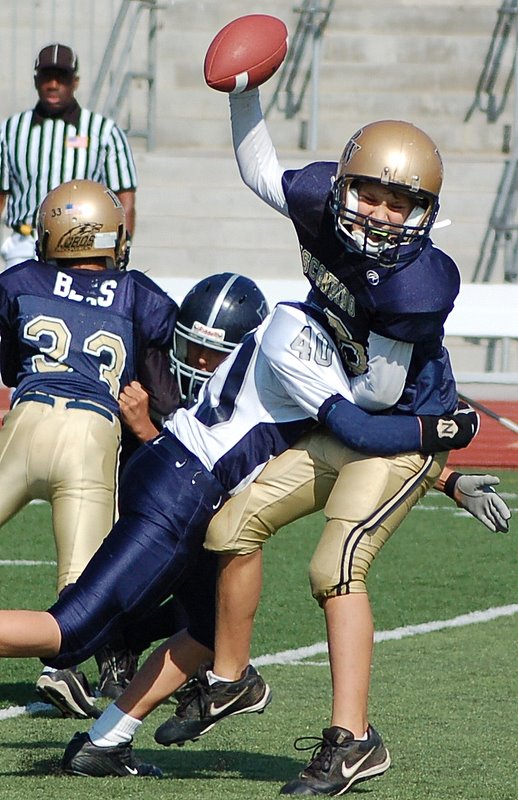
OAK RIDGE, Tenn. —Sports injuries among young athletes are reaching epidemic proportions. Participation in sports is becoming more popular among American children. More children are choosing a sport at a very young age and most are playing sports year round. Children are not miniature adults, and all of this activity does not allow time for their bodies to rest.
Because they are still growing and developing, children are less coordinated and have slower reaction times than teens and adults. They also grow at different rates, which can result in small players competing against much larger players of the same age. The combination of these factors puts children at greater risk for musculoskeletal injuries.
Prevention
Parents can help prevent injuries by looking for signs that their children are overwhelmed, over-scheduled, and need a break. Coaches and other qualified adults must make sure that children wear the proper protective equipment for their sport. The equipment needs to meet the standards set by the National Operating Committee on Standards for Athletic Equipment. It is also important for parents to listen to their children. Does your child like the sport they are participating in? Children are more likely to become injured if they are not happy with the sport they are playing. If a child is not happy with their sport the child could be playing the sport improperly or not giving their best effort leading to a risk for injury.
Children should be supervised by properly trained adults and matched for a sport based on their size, skill level, and physical and emotional maturity. Young players should practice their sport, warm-up before and after playing a game, drink plenty of fluids when they are physically active, and take adequate rest breaks during practices and between games.
Overuse Injuries
Nearly every child who plays a sport has some risk of an overuse injury. The most common overuse injuries are soft tissue injuries including sprains, strains, and contusions. A sprain is a partial or complete tear of a ligament, which is a tough band of fibrous connective tissue that connects the ends of bones and stabilizes the joint. A strain is a partial or complete tear of a muscle or tendon. The most common sports injury, contusions (bruises), rarely causes a young athlete to be sidelined. Other sports related injuries are but are not limited to:
• Anterior knee pain: The pain associated with this injury occurs in the front of the knee under the kneecap and typically involves swelling because of inflammation of the tendon or cartilage. It is caused by muscle tightness in the major muscle groups around the thigh.
• Shin splints: Patients experience pain in the front and lower parts of their legs. This injury is often caused by repetitive running on a hard surface or over-training.
• Spondylolysis: Patients have lower back pain as the result of repetitive constant over stretching (hyperextension) of the spine. This condition is commonly seen in children who play football, weight lifting, gymnastics, or wrestling.
• Inflammation of the shoulder: Pain and swelling of the shoulder typically occurs because of repetitive stress from the overhead athletes such as baseball players or swimmers. Initially, the pain may come and go, but it may eventually become continuous.
• Little League elbow: Repetitive throwing can cause pain and tenderness in the elbow.
Overuse injuries may be aggravated by growth spurts, improper warmups, poor technique, participation in sports year-round, participation in several sports during a single season, or use of improper equipment.
Treatment
When an overuse injury is diagnosed, the goals of treatment are to control the pain, prevent complications, and promote healing of the injured area. The injured child may need rest, ice, compression and elevation of the affected area. After seeing their physician, the child may need to wear a splint or a cast, use crutches or a wheelchair, undergo physical therapy, or have surgery.
The objectives of physical therapy may include stretching and strengthening of the injured muscles, ligaments and tendons. Children often heal quickly, and it is important for them to follow the advice of their physician and physical therapist to prevent re-injury.
Re-injuries tend to occur when a patient returns to activity before a previous injury has healed. Not allowing the injured area to heal properly places stress on the area and causes the body to make up for the weakness elsewhere. What does all this mean? Your child is at higher risk for injuring another part of the body if the initial injury is not allowed to heal properly. In some cases, a child may be unable to return to a sport without risking re-injury. Returning to sports should be discussed with your physician and your physical therapist in detail in order to prevent further injuries.
As a parent of an athlete, following the above mentioned items can help prevent your child from becoming injured.
Kimberly Morgan, PT, DPT, is a physical therapist on the staff of Methodist Therapy, a service of Methodist Medical Center of Oak Ridge. Kimberly received her undergraduate degree from Austin Peay State University with a Bachelor of Science in Biology and a minor in Health and Human Performance. Kimberly received her Doctor of Physical Therapy degree from East Tennessee Sate University. She is a member of the American Physical Therapy Association.

